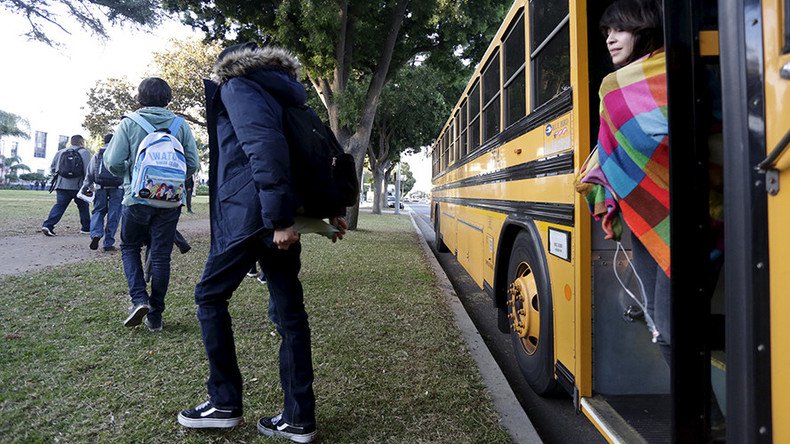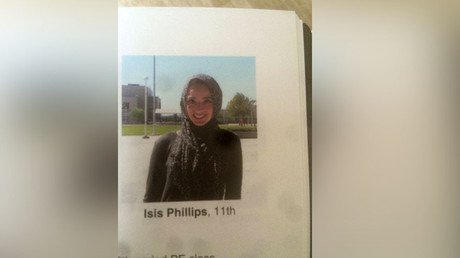'Five-decade-long battle': Court orders Mississippi school district to desegregate

A northwest Mississippi school district has been ordered by a federal district court to "consolidate its secondary schools" that have long been separated along racial lines some six decades after the US Supreme Court ordered school desegregation.
On May 13, the US District Court for the Northern District of Mississippi ordered the Cleveland School District in the 12,000-resident town of Cleveland, Mississippi, to consolidate its two middle schools and two high schools that are "divided by railroad tracks that separate east from west as well as black from white," the US Department of Justice (DOJ) wrote Monday.
It’s 2016, not 1954, and the biggest story in Mississippi is about a federal court ordering school desegregation. pic.twitter.com/46ooVX4Qro
— Chico Harlan (@chicoharlan) May 17, 2016
The DOJ said Cleveland, located along the Mississippi River Delta about 120 miles northwest of Jackson, has four schools that will be impacted by the desegregation plan, including the "virtually all-black" D.M. Smith Middle School, which will merge with the "historically white" Margaret Green Junior High School, and the "virtually all-black" East Side High School that will join the "historically white" Cleveland High School.
Mississippi leads the nation in orders to desegregate school districts. How does your state compare? Our interactive: http://t.co/OWipSWYFE0
— ProPublica (@ProPublica) December 26, 2014
“This decision serves as a reminder to districts that delaying desegregation obligations is both unacceptable and unconstitutional,” said Principal Deputy Assistant Attorney General Vanita Gupta, head of the DOJ's Civil Rights Division.
“This victory creates new opportunities for the children of Cleveland to learn, play and thrive together. The court’s ruling will result in the immediate and effective desegregation of the district’s middle school and high school program for the first time in the district’s more than century-long history.”
On May 17, 1954, the US Supreme Court, in the case Brown v. Board of Education of Topeka, deemed unconstitutional any state law sanctioning a "separate but equal" public school system. Yet the high court outlined no path for school desegregation, eventually ordering states to desegregate "with all deliberate speed" in a separate, follow-up case to Brown v. Board of Education.
US District Judge Debra Brown's 96-page order outlined a clearly "inadequate dual system" within the Cleveland School District, the DOJ said. In its opinion, the court said “the delay in desegregation has deprived generations of students of the constitutionally-guaranteed right of an integrated education. Although no court order can right these wrongs, it is the duty of the [d]istrict to ensure that not one more student suffers under this burden.”
The school district's alternative plans offered to the court were rejected as unconstitutional by the district court, paving the way for Judge Brown's opinion. Brown called the district provided "weak" evidence that it could pull white students to the nearly all-black schools.
"The district's plans allowed for student and parent choice," Jamie Jacks, a lawyer for the district, wrote in a statement, according to the Associated Press. "If the board appeals, it would request that the existing open enrollment plan continue while the appeal is pending."
Cleveland has about 3,700 students in its public schools, 67 percent of whom are black while 29 percent are white.
"The court concludes that the continued operation of East Side High and D.M. Smith as single-race schools is a vestige of discrimination and that, therefore, a plan which allows such continued operation must be rejected," Judge Brown wrote.
The court's desegregation plan was developed with both community and expert collaboration, the DOJ said. In addition to consolidating the four schools, the plan calls for the school district to "review its existing educational programs and identify new programs for the consolidated schools, address staffing considerations and perform necessary maintenance and upgrades to facilities."
The DOJ's Civil Rights Division is tasked with helping Cleveland follow the desegregation order. The DOJ was still party to 43 desegregation lawsuits in Mississippi alone as late as 2014, the AP reported.
















